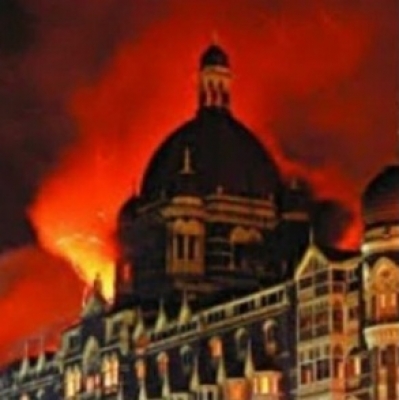By Quaid Najmi Mumbai, Nov 25, : .Several security agencies from the United States quickly analyzed the attacks and learned lessons.
This was revealed in the detailed hearing of the Committee on Homeland Security and Governmental Affairs (U.S.Senate), which took place on January 8 and 28 2009.The committee was presided over by Senator Joseph I.Lieberman (whose legislation had opened the way to the creation of the Department of Homeland Security) and was attended by 15 other U.S.citizens.Senators and security experts.
Shortly after the 26/11 attacks Sen.Lieberman flew to New Delhi and met Dr Manmohan Singh (the then Prime Minister), Pranab Mukherjee (Minister for External Affairs) and M.K., the National Security Adviser.Narayanan was followed by a visit in Pakistan to meet with the then PM, Yousaf Rasa Gillani, as well as the army’s chief staff officer, General Ashfaq Parvez Kayani.
“The terrorists wanted India’s people to be divided and radicalized and to provoke war with Pakistan,” Sen.Lieberman, who was a member of the U.S.Senate from 2013 to 2013, stated.He said that India’s government, in fact, India’s people, have been stronger and more intelligent than that.
He also demanded that the perpetrators of these attacks be tried to bring them to justice.
The US exercise was intended to protect itself from another attack.
However, the attack on Mumbai had been unique on many counts.This was confirmed by the U.S.Senate Committee after an extensive autopsy by experts.
First, the terrorists from the Lashkar-e-Tayiba group (LeT), which was struggling to emerge after the September 9th 2001 attacks in the USA, had chosen “soft targets” in private and public places with the intent of inflicting maximum human deaths in Mumbai.
Charles E.Allen, then the Under Secretary for Intelligence & Analysis at the U.S.Department of Homeland Security, noted that the mini-army of 10 men used “fairly common weapons” but caused havoc and destruction, which indicates they were well-trained.
They had all the information they needed on their target sites, all within a mere 5 sq.km.area in South Mumbai.It was the result extensive advance recces and ferreting data on traffic patterns, escape routes and so forth, which made it “a successful assault”.
The ‘low tech’ attacks with the weapons of a basic infantryman were dramatically enhanced by tech enablers who used satellite and cell phone to monitor the global media’s coverage of their brutality and also took hostages in order to get the latest information about the Indian government’s response and receive instructions from their handlers’ in Pakistan.
In a typical hit-and-run’ operation, the attackers took advantage of the initial chaos in Mumbai and moved onto new targets while security forces struggled to find the first target.There was no “unified command”.
Donald N.Van Duyn (then Chief Intelligence Officer of U.S.Federal Bureau of Investigation) testified that aN FBI had rushed to Mumbai on Nov 29, 2008 just as the horror was ending.One attacker, Ajmal Amir Kazab, was captured alive to aid the Indian authorities in their investigation.
The FBI team was determined to bring justice to the U.S.citizens who were killed in the 26/11 terrorist attacks.They also launched a preventive mission to determine if there was any other threat to the U.S., her people, and her allies.
Duyn, a ranking member of the committee, said that 26/11 proved that terrorist groups don’t require weapons of mass destruction or large quantities of explosives.
However, they made even the simplest weapons deadly with the help a small, highly-trained, disciplined group that could cause unprecedented mayhem.
Duyn stated that “Other terrorist organizations will no doubt take notice of and seek out the Mumbai attacks,”.
He cautioned that we must continue to look at both small and large organisations with the right combination in capabilities and intent to conduct attacks.
Apart from Sen.Lieberman the committee included Senators Susan Collins and Carl Levin, Daniel Akaka.Tom Coburn, Thomas Carper.John McCain, Mark Pryor.George Voinovich.Mary Landrieu.John Ensign.Claire McCaskill.Lindsey Graham.Jon Tester.Roland Burris.Michael Bennet.
(Quaid Najmi may be reached at: q.najmi@ians.in
qn/srb #Mumbai #Delhi
.







